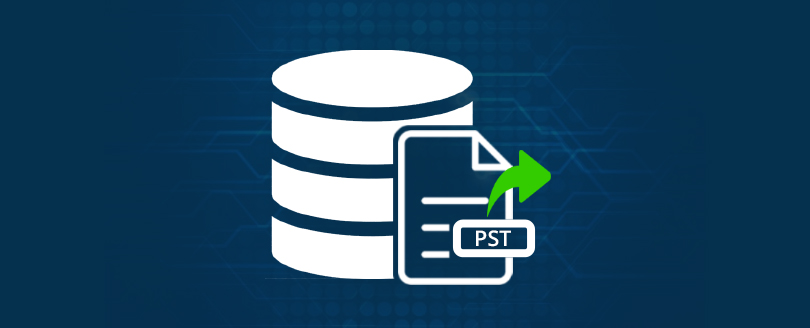Outlook recovery will get your Outlook data back in case of accidental/intentional deletion or cyber attack. In this article, we’ll find out about Outlook recovery if you want to take a deeper dive into the topic.
It is essential to understand that to recover your Outlook emails and files; you need to have them backed up. Backup is a separate copy of your data stored safely and available for recovery.
Let’s take a look at four main options to back up your Outlook data and recover it in case of necessity: options include email forwarding, exporting a PST file with Outlook data, auto-archiving, and using backup software.
All Outlook backup and recovery options can be divided into two groups: native and third-party. Native, or built-in, options include email forwarding, exporting a PST file, and auto-archiving. Third backup and recovery refer to additional security software aimed at improving the security of your Office 365 cloud data.
Email Forwarding

When you forward an email, a copy is created. That’s why forwarding Outlook emails from your main account to a spare one may be an excellent way to preserve your information. The method of forwarding emails is a native option available for Office 365 admins.
To set up email forwarding:
- Go to the Office 365 Exchange admin center.
- Select Settings and click Mail.
- Go to Accounts on the left side of the bar. Choose Forwarding.
- Select the Start forwarding option and input your spare email.
- Tick the box Keep a copy of forwarded messages and click Save.
The email forwarding method is quite easy to execute. However, it has two crucial drawbacks. First of all, this method is space-consuming, which means high additional costs to maintain your cloud data.
Secondly, a spare email account and backed up data are vulnerable to the same threats as the primary account. In other words, data loss will likely impact both accounts. That’s why email forwarding is not the most secure backup option.
Exporting a PST File

Exporting a PST file allows you to create a copy of Outlook data on your computer. To do it, follow these steps:
- In your Outlook, select the file. After that, choose Open & Export and click Import/Export.
- Choose export to a file and click Next.
- Choose Outlook Data File (.pst) and click Next.
- Select your email folder and click Next.
- Browse for a location to get your data to name the exported file and click Finish.
To make the exported data more secure, you can protect it with a password. Alternatively, you can leave the field blank and click OK, if you don’t need to set up a password.
However, exporting PST files has a severe drawback. Though it is possible to reduce the size of PST files, they still may require too much space on your computer. That’s why for a user with significant data flow, exporting PST files may not be an ideal solution. Apart from that, storing backed up data on a computer may not be the best solution for the reliability and accessibility of protected data.
Another significant disadvantage of this method is the lack of regularity. Each backup via export is done manually, which is very time-consuming. That’s why automated backup solutions are popular in corporate environments.
Auto-Archiving

The Auto Archive option allows you to preserve old emails; you may potentially need in the future. Archiving is not precisely a backup, as it transfers files instead of creating a copy. Nevertheless, archiving is worth mentioning as it shares some functionality with a substitute.
To set up the Auto-Archiving option:
- In your Outlook, go to the File tab and choose Options.
- Select the Advanced, then AutoArchive Settings.
- Select Run AutoArchive every and choose the frequency you need.
- Select Cleanout to set a period to move your files from Inbox to the Archive folder.
- Click Move old items to and name the destination, or Browse and select it from the given. Click OK to confirm your choice.
In some cases, the Archive option may be a suitable substitution for a backup, as it helps you with preserving essential files in the long term. However, there are several significant drawbacks.
As mentioned above, this method does not create a safe copy as backup does. The files are just transferred to an archive folder, without remaining in the original folder. Moreover, only some files are archived, making some data loss in case of an emergency.
Using Backup Software

As you can see, all built-in Outlook recovery options have certain limitations, which may negatively influence user experience and security of emails.
One of the potential vulnerabilities of native Office 365 backup and recovery options is “keeping all eggs in one basket,” or storing backup data in the same Office 365 cloud as the source data. That means that backup data may be affected by the same threats (human error, virus, ransomware) as the original data.
That’s why using additional backup software may be an excellent solution to get a more extensive choice of recovery options. The main benefits you can get from a third-party backup software like Spinone are:
- Automated backup
- Recovery in several clicks
- Storing backup data separately from the original data
- Advanced security against cyber attacks
- Unlimited cloud storage
- Customizable data retention
- Backup of Outlook and other Office 365 services: OneDrive, Calendar, People
Summing up, native backup and recovery tools (email forwarding, auto-archiving, and exporting data in the PST format) may come in handy sometimes. Anyhow, using third-party backup software might be a good idea to make the recovery process more comfortable and more reliable.
That was a brief overview of backup and recovery options for Microsoft Outlook emails. We hope you’ve found it useful to evaluate the best Outlook backup and recovery options.
Would you like to learn more about backing up and recovering other Office 365 services? Here you can find out more about such SharePoint recovery tools as SpinOne and how they help you to keep your Office 365 data secure.





